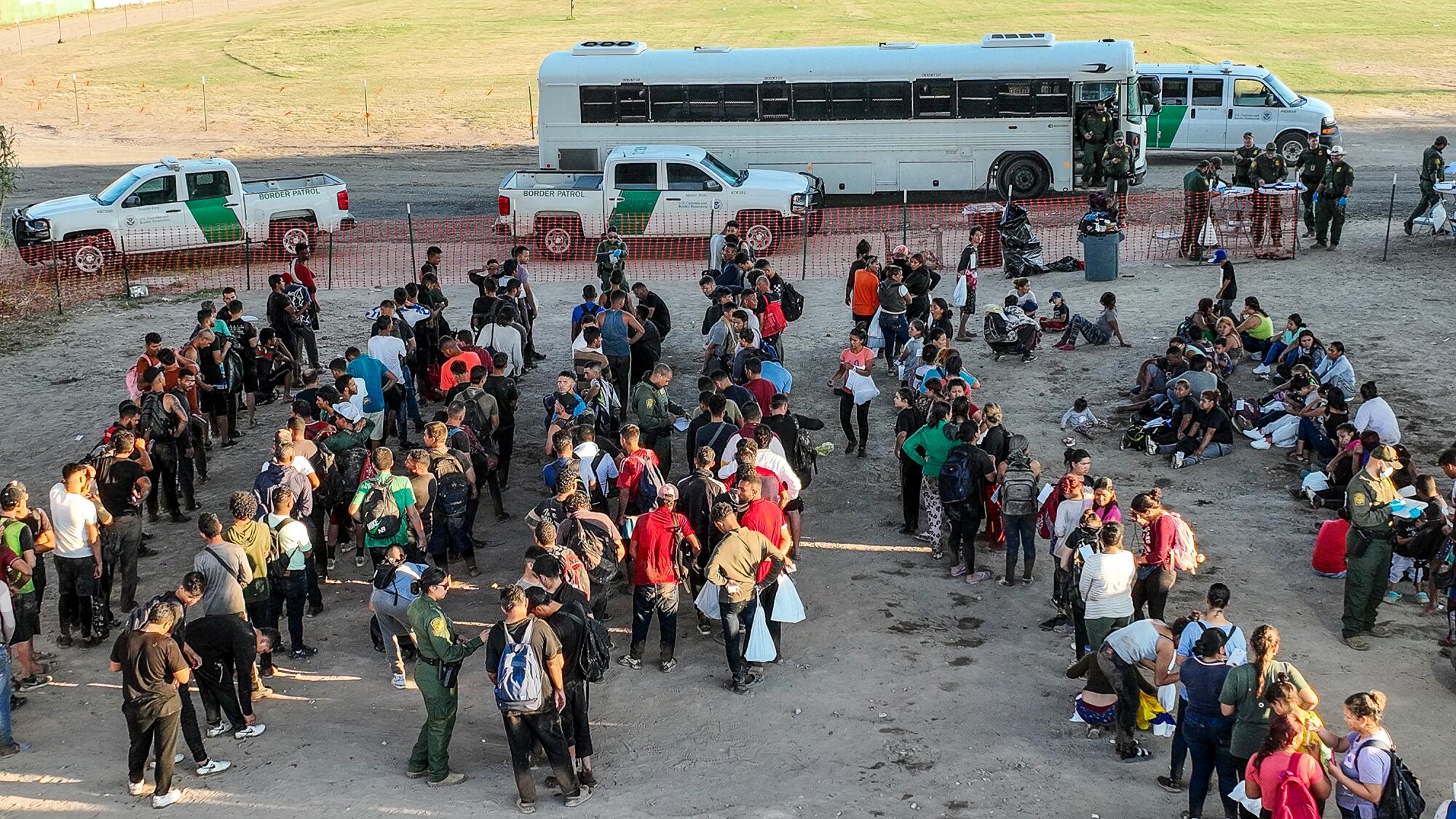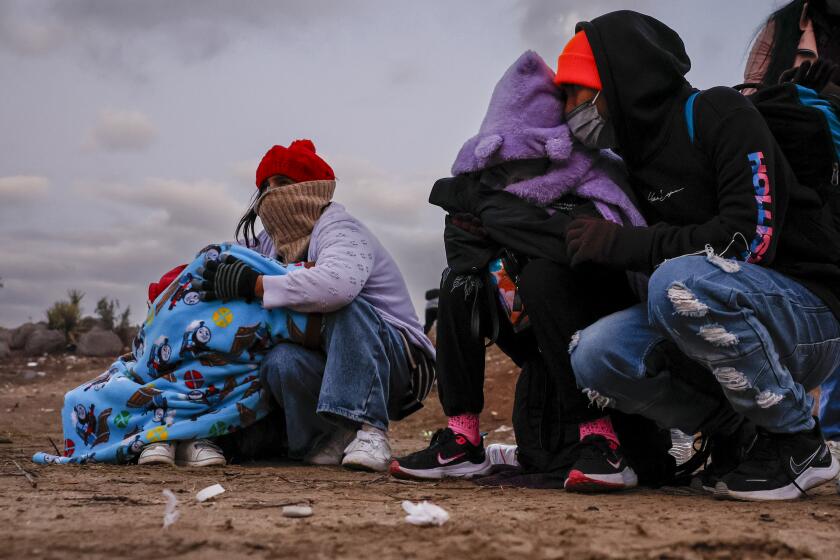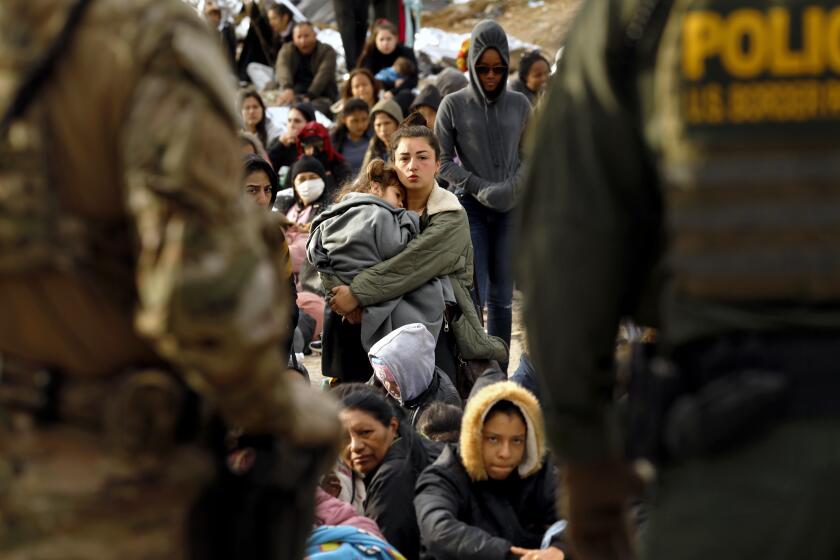
For the first time in decades, San Diego has become the top region along the southern border for migrant arrivals.
Migrant arrests in San Diego reached 8,989 for the week ending April 16, according to figures the agency posted on X. Meanwhile, Tucson — which previously had been the top region for crossings — had 7,500 arrests for the week ending April 19.
The numbers appear to be growing. San Diego Chief Border Patrol Agent Patricia McGurk-Daniel wrote on X that 9,513 migrants were arrested as of Tuesday, a 36% increase from two weeks prior.
Migrant arrests near Texas plummeted in January compared to the same month a year ago, but they soared at entry points in California and Arizona.
San Diego hasn’t been the top region for migrant arrests since at least October 1999, according to monthly agency figures. The last full year San Diego was the top region was 1997.
The shift is significant, said Adam Isacson, director for defense oversight at the Washington Office on Latin America, a research and advocacy organization.
It reflects changes in smuggling routes, which were consistent for many years but have begun to shift every few months since 2021, in part because of the post-pandemic increase in global migration to the U.S.
According to yearly agency data, San Diego saw the highest numbers of migrants from 1973 to 1997, then Tucson took the top spot until 2012.
The Rio Grande Valley in Texas saw the most migrants starting in 2013, and monthly agency figures dating back to 2020 show that trend continued until May 2022, except for a month when Del Rio had the highest numbers.
Since then, different regions along the border have received the most migrant arrivals every few months — Del Rio, then El Paso, then Rio Grande, then Tucson. If weekly trends continue, San Diego could become the fifth.

Isacson said smugglers used to tell migrants where to cross, based on relations with organized crime and corrupt officials. But that seems to be changing, he said.
The shift also has to do with the increase in cellphone usage among migrants, Isacson said. He said migrants get information from “TikTok and WhatsApp and what you hear in shelters along the way, what other migrants tell you on the road.”
“They’re getting news in a way that you couldn’t really get it before,” he said.
Texas’ share of arrests is the lowest it has been since October 2019, Isacson said. That’s in part because the government of Mexico has upped enforcement against migrants traveling atop freight trains through the country up toward Texas.
California is receiving a slightly larger share of a federal program earmarking $300 million nationwide for migrant-assistance programs.
Mexican officials have a harder time disrupting migration to Baja California, said a senior Customs and Border Protection official who asked for anonymity to speak freely.
That’s because unlike many border towns across Texas, Tijuana is a prominent metropolitan area. Migrants use legitimate travel means to get there — some come by bus, others fly direct if Mexico doesn’t require a visa for people from their country of origin.
Crossings tend to take place inland, where it’s harder for Border Patrol to quickly respond.
The Department of Homeland Security — which oversees the border protection agency — is working to revoke visas or impose visa sanctions for charter transport companies involved in moving people toward the border, the official said.
The agency expects the trend to hold for weeks and is shifting personnel and other resources to the region in response, the official said. Some migrants are also being transferred to other regions that are seeing fewer arrivals and have more processing capacity.
The Biden administration recently allocated $45 million to California programs that help migrants who have crossed the southern border.
More to Read
Get the L.A. Times Politics newsletter
Deeply reported insights into legislation, politics and policy from Sacramento, Washington and beyond. In your inbox three times per week.
You may occasionally receive promotional content from the Los Angeles Times.








